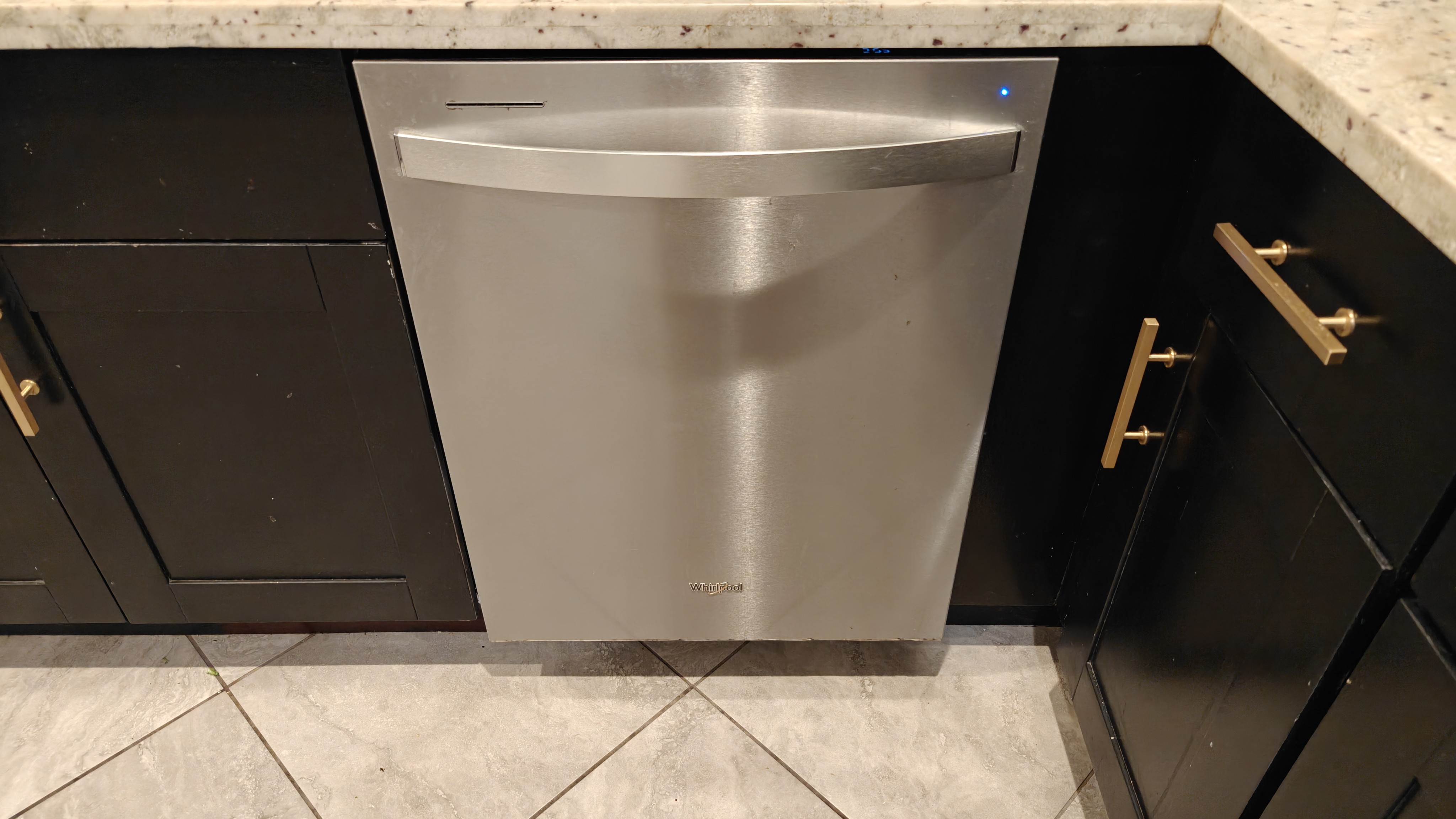Best smart speakers: Alexa, Siri, Google, Sonos and more
Complete your home audio set up with one of the best smart speakers that will keep you entertained.
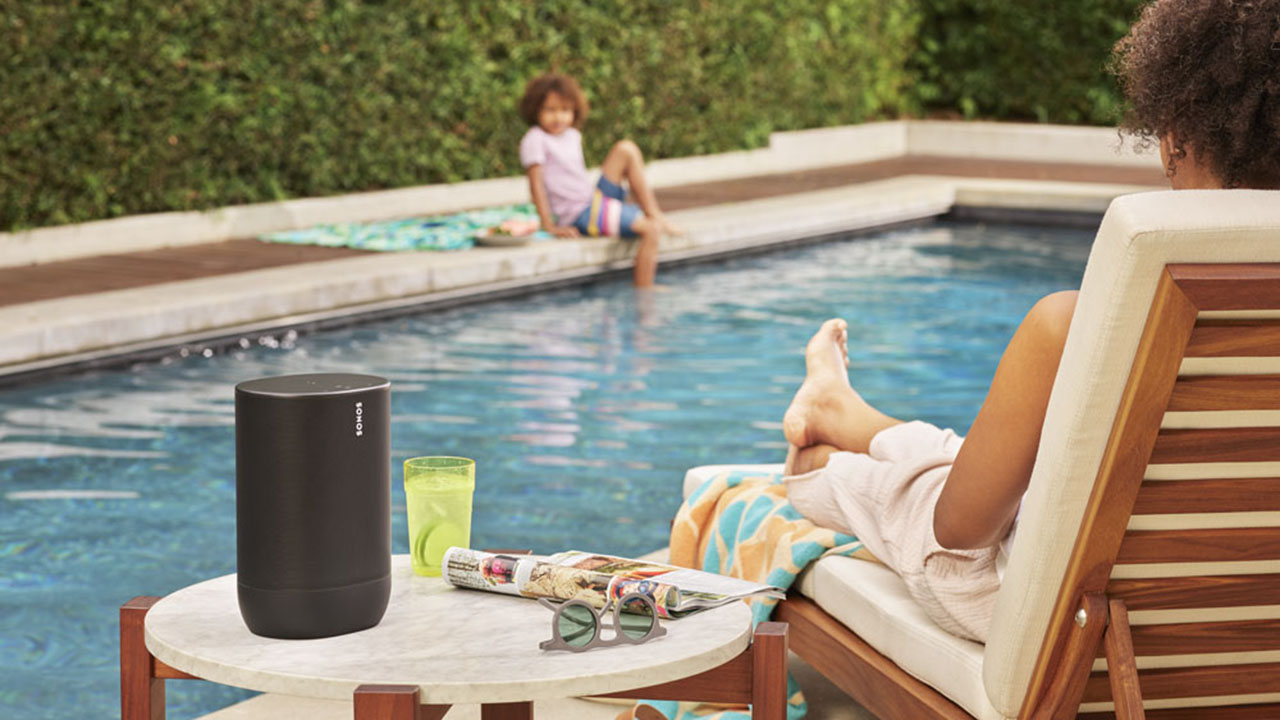
The best smart speakers combine all the best parts of music players with intelligent listening to make them even more useful. These speakers not only have microphones to hear your commands but they're also backed by AI-powered smart assistants.
That means you can ask your speaker what you want to listen to—and plenty more besides. From checking the weather to controlling your smart home, these smart speakers can do it all without you having to lift a finger.
From the super affordable Amazon Echo to the higher-end Sonos Move right through to the compact Google Nest Mini, there are lots of speaker options to suit everyone's needs. Yup, you no longer need to sacrifice premium audio quality to get a smart voice-controlled assistant in your favorite speaker spot in your home.
So, from being alerted by your video doorbell to unlocking your smart lock door, you can do it all from the comfort of your sofa. It's worth noting that while some speakers offer multiple voice assistants, most will let you choose between Amazon Alexa, Google Assistant, Apple Siri, or Microsoft Cortana. So it's worth considering which you use the most, like best, or which is more compatible with your needs.
With that in mind, here are the best smart speakers available right now, organized with standout features so you can find the perfect model for you.
The best smart speakers we recommend
Why you can trust Top Ten Reviews
We at Top Ten Reviews are on a mission to review everything we feature in our buyer's guides, but while we work hard to make this a reality—or where this isn't possible—some of our guides still feature rankings based on our team's considerable expertise and research.
While we haven't been able to test any of the units in this guide in person, we've instead honed in on top-rated brands and used our knowledge of the best central air conditioning unit features to help you make the right decision for your home, all for the best price.
The best smart speaker overall
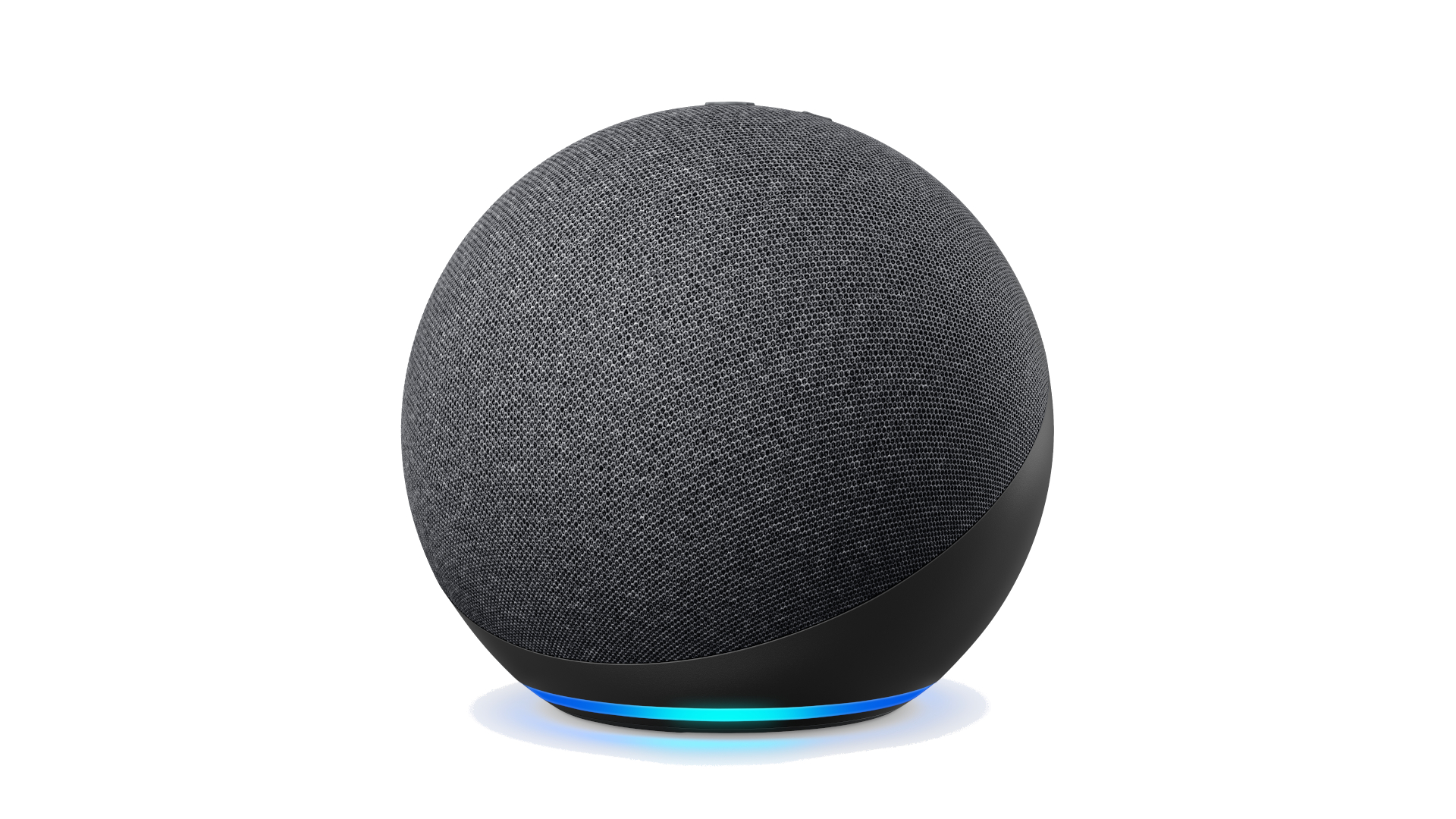
Specifications
Reasons to buy
Reasons to avoid
The Amazon Echo (4th Gen) smart speaker is the winner of our best smart speakers list thanks to its perfect balance of price, audio performance, and smart functionality. So, while it might not be the best-sounding or looking on this list, it does everything so well and in one well-priced package that it will serve the needs of most above and beyond what's expected.
This speaker is built to listen to you since it's all about getting that Alexa smart assistant into homes. As such, it comes packed with a six-microphone array that can hear voices from anywhere in the room. If you enable it, this can even pick up your voice specifically and tailor the results to suit what it has learned you may want. Expect Alexa to understand all your requests, even in noisy environments with other voices, music, white goods, and more, all trying to drown you out.
To continue with the smart assistant features, Alexa can control the smart home. So, this does more while you can ask Alexa to play music, check the weather, or convert a cooking weight for you. You can control your home's thermostat to get the temperature right, have the Echo alert you when your smart doorbell goes, or even easily add items to your digital shopping list. Plus, you get Zigbee and Sidewalk onboard for all your other smart gadgets that can be controlled directly from here.
The speaker itself is better than ever in this fourth-generation model. As such, you can expect a genuinely impressive balance of music with enough power and punch to fill a room without distortion, even at higher volumes.
A super all-around smart speaker at a very fair price.
The best premium smart speaker
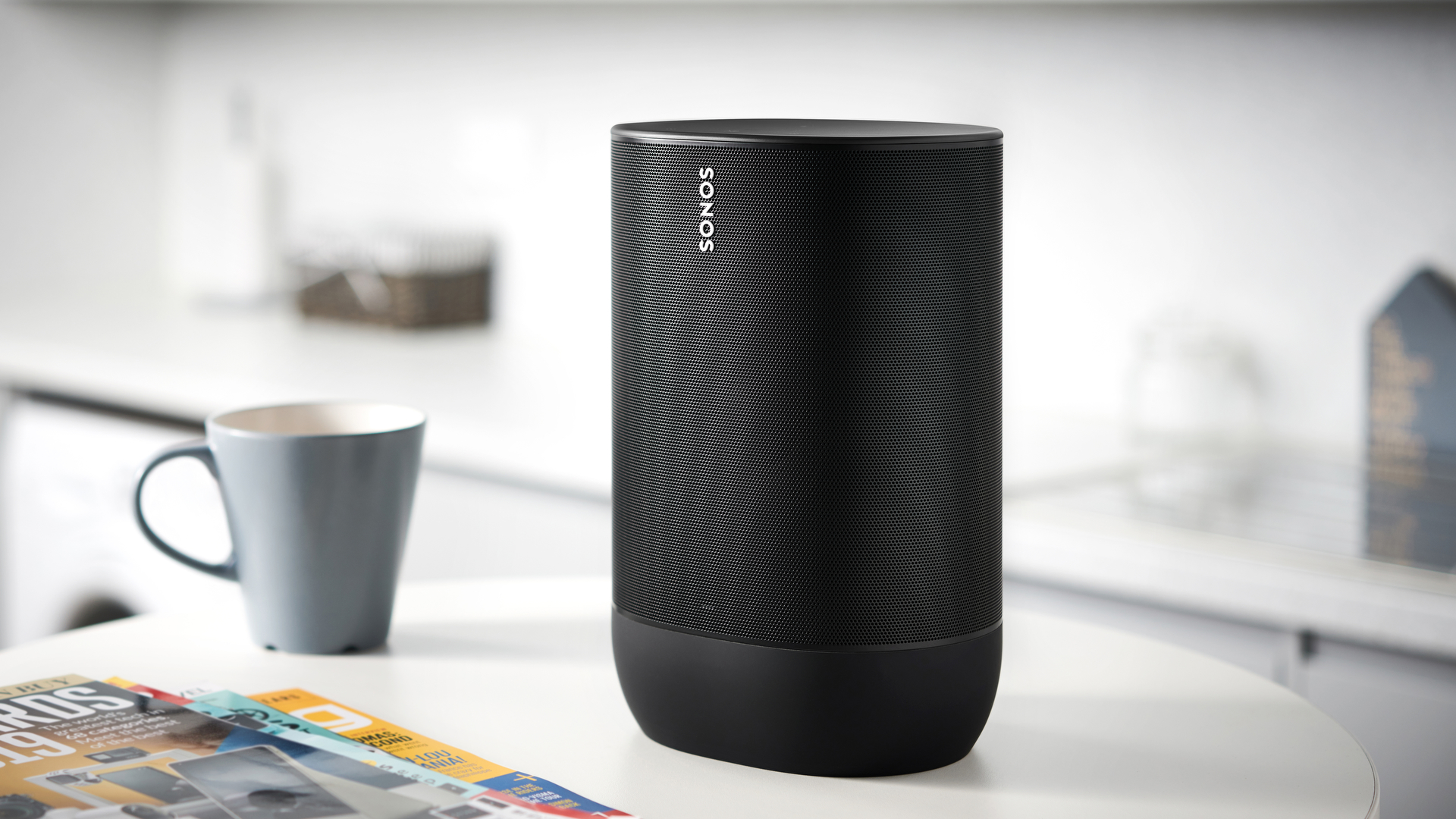
Specifications
Reasons to buy
Reasons to avoid
The Sonos Move is the most mobile speaker from the now world-renowned speaker company, which started the whole multiroom revolution. The Sonos Move is the company's first truly mobile speaker, as it packs in battery power to allow you to take it wherever it is needed, whether into various rooms or out into the yard for a barbecue party. The battery is good for 10 hours, and the speaker is IP56 rated for water and dust, so you don't even have to worry about rain or using this by the pool. Crucially, it does all that while keeping the high-quality audio and smart voice control standards we've expected from Sonos.
You have a six-microphone array listening to your command – which can be for Alexa or Google Assistant, as you can set up with the one you use most. There's WiFi connectivity and Apple AirPlay 2 support, but since you're likely to move this out of the WiFi range, there is Bluetooth connectivity. But the great part of this speaker is its audio smarts.
Take the Sonos Move out into a new space, and it will automatically detect it has been moved. It will also use its microphones to test how its audio output performs in that space. It will then adjust the audio to suit the space it is in. For example, playing this from the corner of a room will sound as good as outside in an open space, as it will intelligently adapt to suit.
The Class D amplifier and speaker setup create a perfectly balanced and powerful sound that's difficult to fault. You'll pay more for that Sonos name, but you'll hear why the second you start using this superb speaker.
The smart speaker with the most iconic design
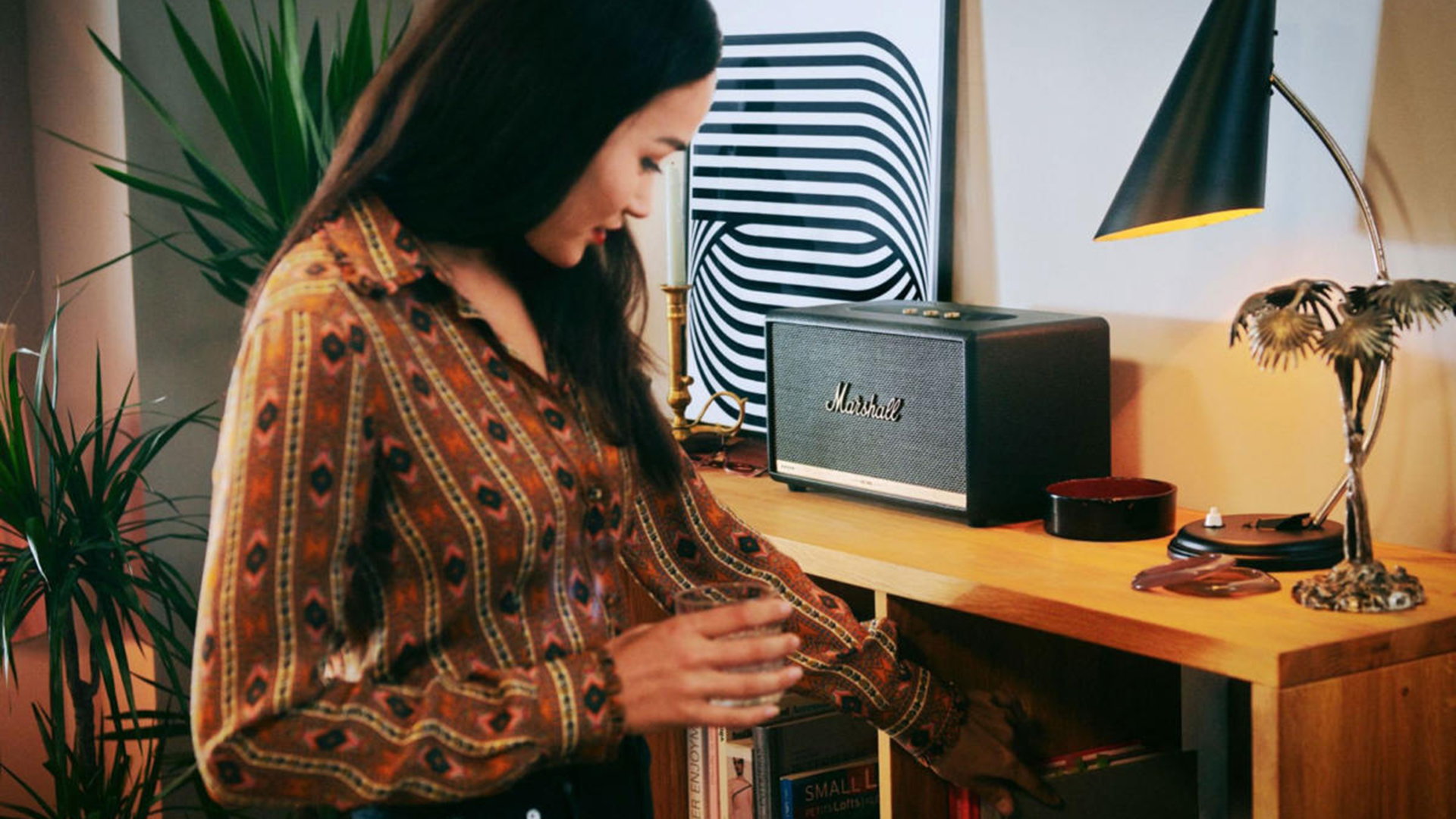
3. Marshall Stanmore II Voice
Specifications
Reasons to buy
Reasons to avoid
The Marshall Stanmore II Voice is a stunner; there's no denying it. With those classic guitar amp looks, this combines retro with modern to give a look that screams music fan when viewed from almost all angles. That's because this is designed by band-backing speaker specialist Marshall, who has decades of experience creating high-quality and reliable speakers. Making them smart – that part is new.
This speaker comes with Alexa as the onboard smart assistant, and she can be controlled using the dual microphone setup, which can pick up voice commands well. It is not the best, but it works well enough in most situations. Unlike some other speakers, this offers WiFi, Bluetooth, aux 3.5mm input, and RCA, making this perfect for most uses.
The reassuringly weighty 10-pound speaker packs a powerful 50W Class D amp for the sub and two 15W Class D amps for the tweeters, resulting in high-quality audio with lots of grunt. Everything is well-balanced; as you might expect from Marshall, the volume can go up without distortion. That makes this a viable day-to-day speaker and a unit that can be cranked up for a party.
It's also worth noting that this speaker stands out as visually iconic with that Marshall design, and this continues into the audio performance. This is a Marshall-sounding speaker, making it ideal for guitar-based music, but thanks to a fine balance, it does well with all types of music.
The best value smart speaker

4. Google Home Max
Specifications
Reasons to buy
Reasons to avoid
As the name suggests, the Google Home Max is the largest and most powerful speaker range that Google has to offer. As such, this model is ideal for anyone who wants the functionality of a Google Assistant speaker but with the extra audio performance of a stand-alone speaker. Crucially, this does that bridge-crossing feat while keeping the price down.
As such, this is one of the best value-for-money smart speakers you can buy. Use this as your day-to-day speaker and assistant, but reserve it for party-level output thanks to the dual 4.5-inch woofers. That means this speaker is powerful enough to work for most uses alone, but it can also be paired with another to create a stereo pair that is ideal for watching movies with immersive audio.
Google Assistant is easy to control thanks to dual microphones which are able to pick up your voice from across even a noisy room. That means you can control your music by voice and your smart home, including thermostats, door locks, and more. You can also use all those Google smarts to have it answer your questions, or you can even conduct web searches on whatever interests you. It's ideal if you're away from your phone and want a quick calculation or fact immediately.
For connectivity, you're all set with WiFi, Bluetooth, a 3.5mm aux in, and USB-C, so you can charge a smartphone right from this mains-powered speaker, too. It's not the lightest at 11.7 pounds, but that's a weight reassuring of audio quality, and – since this isn't made to be that mobile – it's ideal for what you're getting, which is a very capable and reasonably priced speaker.
The best smart speaker for the bedroom
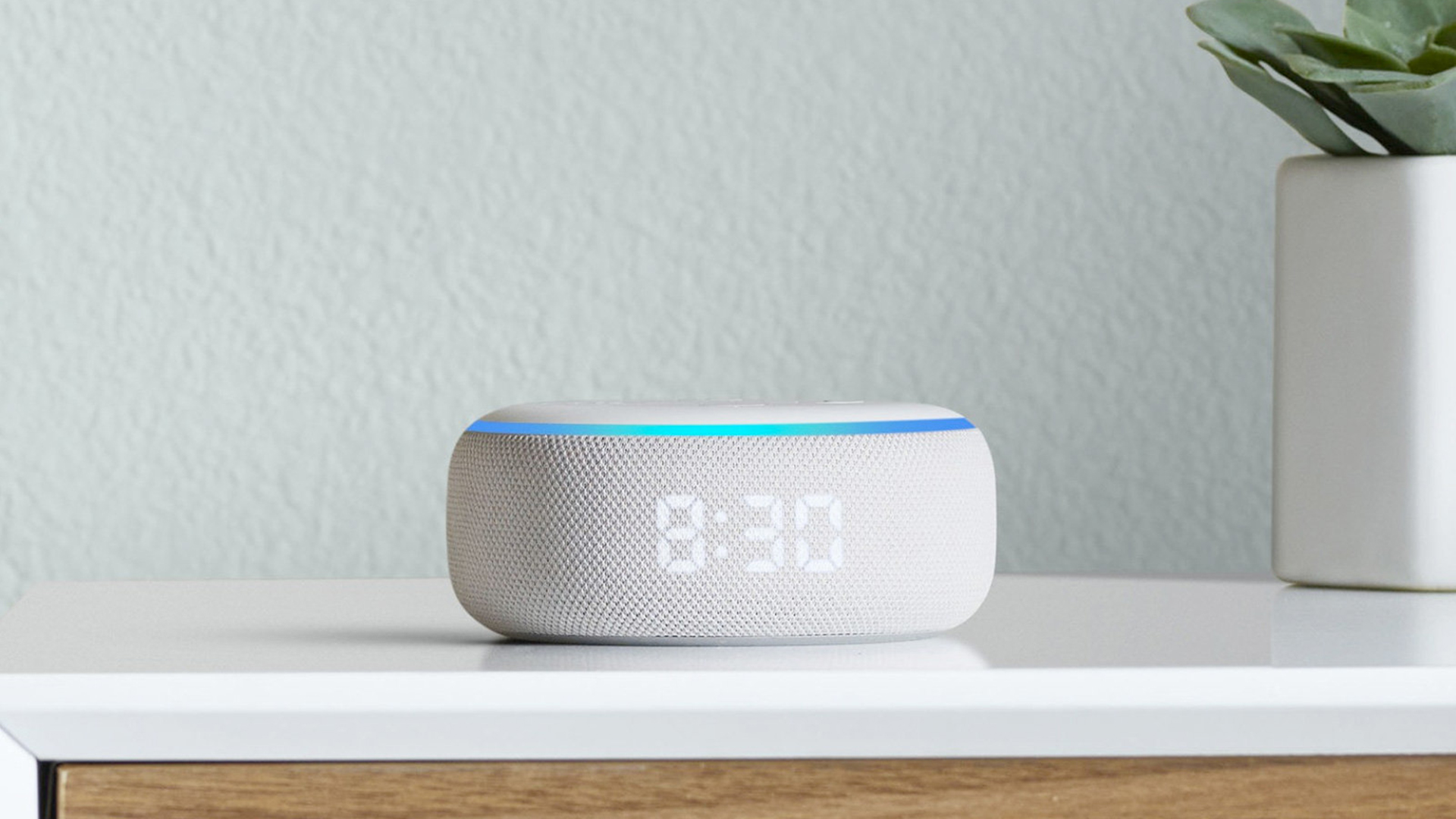
Specifications
Reasons to buy
Reasons to avoid
The Amazon Echo Dot with Clock is a perfect smart speaker for a bedroom or office. Thanks to the funky digital display, it not only offers audio playback and listening but also at-a-glance time and data. This is a really beautifully designed piece of kit from Amazon that manages to cram in the features while keeping the price super low.
Of course, this isn't the best speaker on the list, but it still does a good job of playing music at a quality that can be enjoyed – just don't expect the bass or vast soundstage of a larger speaker. It listens very well, with far-field microphones that easily pick up your voice. That makes this a great way to control smart devices using your voice alone, as well as having access to the weather, conversions, shopping, and answers to any other question that might spring to mind.
The clock is a newer addition that adds at-a-glance time on the LED display, letting you do away with your bedside clock, for example. This is intelligent in terms of lighting, as it dulls at night so you aren't bothered by a bright light as you sleep—but it remains plenty clear enough to read the time should you need it. You can even tap to snooze the alarm, like a classic bedside clock offers.
So if you want a smart speaker with excellent listening ability, offers superb responses, delivers decent enough sound, and does it with a clock while staying on budget – this is an ideal option.
The best multi-room smart speaker
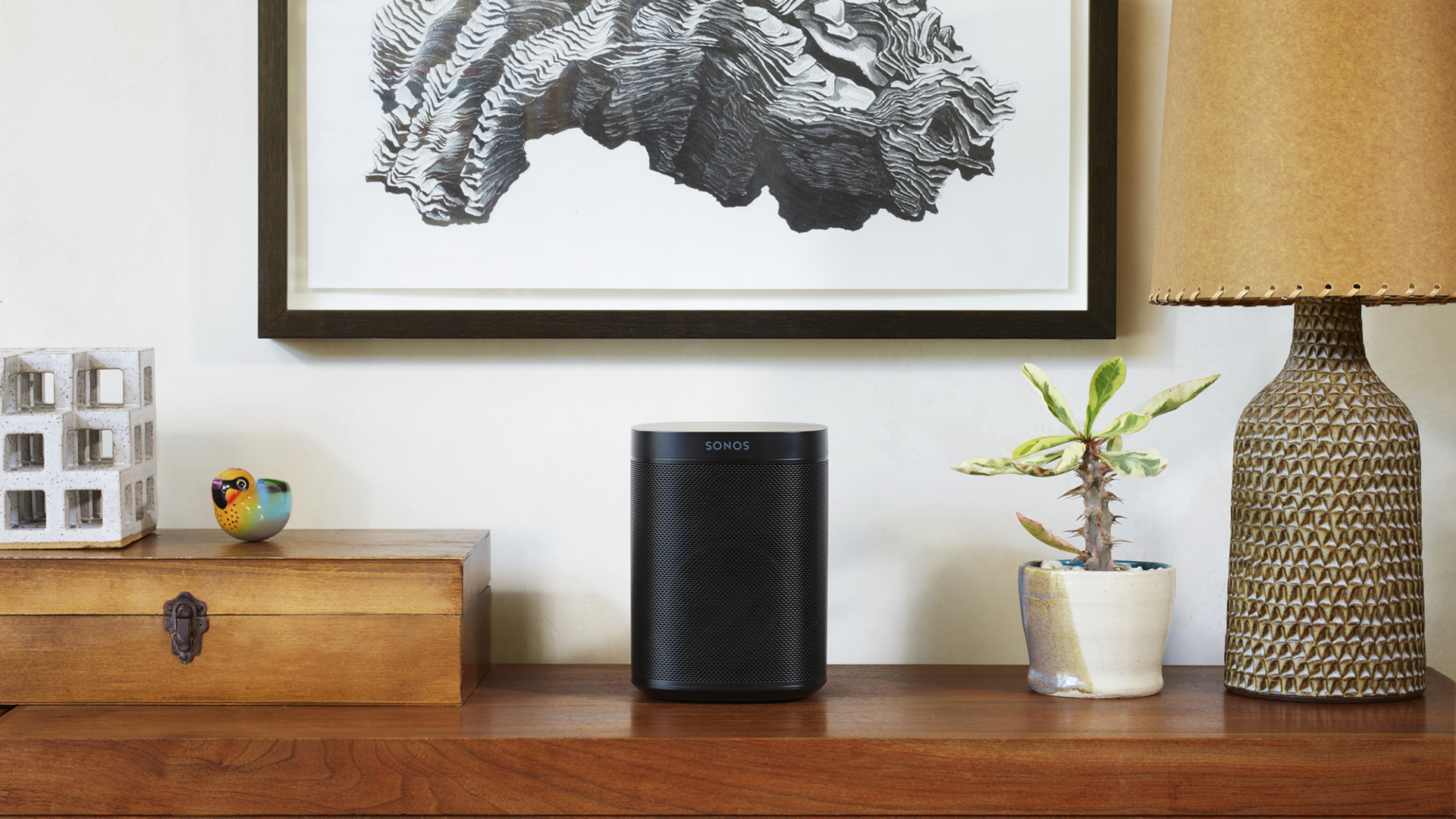
6. Sonos One
Specifications
Reasons to buy
Reasons to avoid
Sonos is where multiroom speakers began, and since the company started adding smart assistant controls, these are some seriously impressive speakers that justify their price and then some. You can expect very good audio performance from the Sonos One, one of the company's most popular speakers in its range. This is thanks to not one but two Class-D amps and a mid-range woofer that combine to offer balanced audio with enough bass and a wide enough soundstage to handle anything you throw at it.
Of course, being Sonos, it is also super compatible with multiroom speaker controls. Use the Sonos app to pair up other speakers, or play using Google Assistant, Amazon Alexa, or Apple's AirPlay 2. This is smart enough to pop up on your network, meaning you can also control it from within your music player, like Spotify, sending it to this speaker alone or multiple speakers as you need.
This is a multiroom speaker first, but thanks to six far-field noise-cancelling microphones, it also works perfectly as a smart speaker. While those microphones create the best audio performance for the space the speaker detects it is in, they also listen to you. Speak a command, and the speaker will quickly respond as you need. That could be to play music, turn up your home heating, check the weather, and plenty more besides.
All that and the speaker looks stunning, with a minimal finish and sleek lines, enhancing any space lucky enough to find this living within.
The best smart speaker for Apple fans
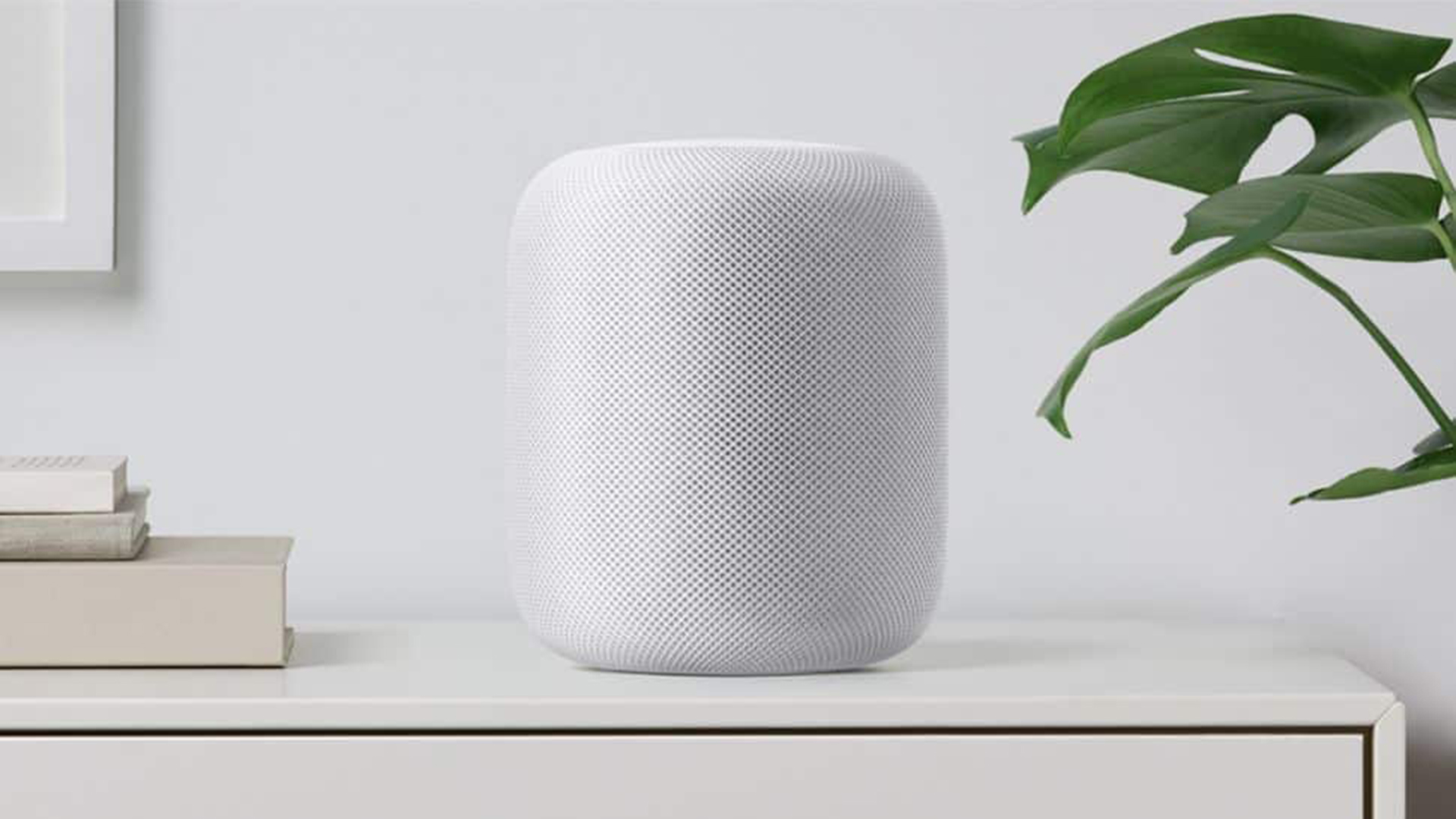
7. Apple HomePod
Specifications
Reasons to buy
Reasons to avoid
The Apple HomePod is currently in its second generation and is now better than ever, both in terms of its sound and features. First and foremost, this is the speaker built by Apple for users of its products, meaning it works best with them. So, if you want Google Assistant or Amazon Alexa, keep reading – this is Siri-powered only. It's also built to play best with Apple AirPlay 2 – but you also have Bluetooth for direct connectivity if you need it.
The audio performance is high-fidelity, which supports Apple Lossless, and you also get Spatial Audio for sound that fills any room this lives within. The system works with microphones to adjust and optimize that audio playback to suit the space in real-time, meaning it is one of the best audio performances you can get at this price. So, from listening to music to playing audio for a movie, this will pack plenty of punch to deliver an immersive experience. This supports Dolby Atmos for truly surround sound as you listen to your movies or shows.
The Siri smart assistant is also better than ever with the HomePod. Not only can you have it carry out commands like controlling your smart home thermostat, setting alarms, or playing music about the home, but it even has automation like detecting smoke or carbon monoxide alarms and will alert your iPhone, iPad, and Apple Watch right away.
The HomePod also looks amazing with that rounded mesh finish, available in black or white. Either way, it's housing a 4-inch excursion woofer, five horn-loaded tweeters, and room-sensing microphones. All that makes for stunning performance and, when paired in stereo with another unit, can make this the center of your home audio experience.
The best smart speaker for hi-res audio

8. Amazon Echo Studio
Specifications
Reasons to buy
Reasons to avoid
The Amazon Echo Studio is the best speaker in the Amazon range, offering the highest-quality audio by far. Of course, at its heart, this is still an Alexa smart assistant-controlled speaker, but it's also a premium-quality audio device. As such, you can buy this to get the best Alexa experience without losing out on all that a premium speaker brand can offer you.
This audio quality comes from features like support for High-Res playback with a built-in 24-bit DAC to create the ideal output no matter the input. You also have support for quality audio like FLAC files, digital audio performance from Dolby Atmos, and even Sony 360 Reality sound, plus plenty more.
Whatever you play, it goes through a system powered by a massive 330W amplifier, which runs three two-inch midrange speakers, a one-inch tweeter, and a monster 5.25-inch woofer for serious bass power. All that means is that you get a super powerful audio output with the balance to deliver the right performance for whatever you're listening to. It will even use its array of seven far-field microphones to analyze the room and adapt its audio output to best suit the space. The bass may be a bit much for some listeners, but with the ability to play with presets, this can be perfected as needed.
Alexa onboard means you can control your smart home, get answers to questions, add items to your shopping list, receive doorbell alerts, and plenty more. It's even a Zigbee hub. You get a lot for the price of this very impressive smart speaker.
The best smart speaker on a budget

9. Google Nest Mini
Specifications
Reasons to buy
Reasons to avoid
The Google Nest Mini is the company's mini speaker option, which allows you to get a voice-controlled Google Assistant smart speaker without spending too much. That makes this ideal if you want a smart assistant in any room you need without breaking the bank by buying full-on speaker performance, too. As such, this delivers enough audio quality for music playback but not enough for an audiophile to be happy. So, for most people, it will do the job fine; it offers a balanced performance and quite a bit of volume, just not the most bass. This version has had a decent bass performance upgrade over the previous generation.
This unit looks decent with its mesh upper and minimal puck shape, all with the multicoloured Google LEDs to help alert you to status changes. It's also wall-mountable, making it potentially an out-of-the-way option for any space. It's also more sustainable, says Google. You won't find a 3.5mm aux in, although with WiFi and Bluetooth 5.0 plus Chromecast support, you likely won't find much of a need for it with a speaker of this size.
The Google Assistant works very well here thanks to three microphones that can pick up your voice even over music playing loud – something the older models sometimes struggled with. So, while that 40mm driver isn't the most powerful, this is a great point of interaction with your smart assistant. Pop a few of these about the home, and you can control the thermostat, unlock smart doors, close smart blinds, have instant answers to nearly any questions, and plenty more, all a voice command away.
The best premium smart speaker
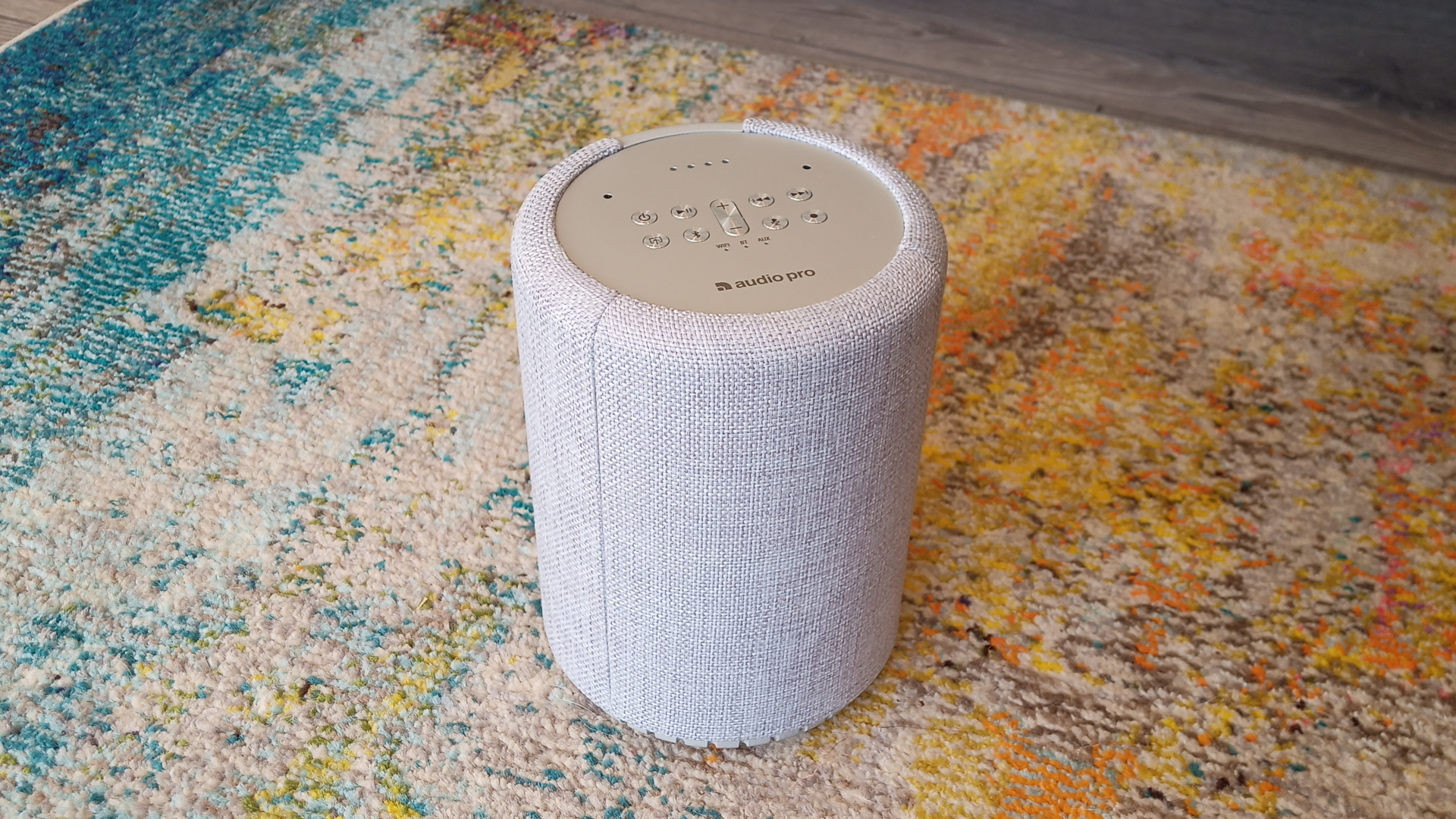
Specifications
Reasons to buy
Reasons to avoid
The Audio Pro G10 is a second-generation version of the Swedish company's premium-built smart speaker. As such, you get all the design positives of this stunning smart speaker only now with the addition of Google Assistant to control everything.
The key factor with this device is that you get that stunning and high-quality, weighty Swedish design but without the high-price tag you might expect. Go beyond the plush material outer and the minimalist design – which doesn't scrimp on button controls – and you have some superb audio grunt too.
Inside, you'll find a room-filling powerful 52W Class D amp backed by two 4.5-inch passive radiators, a 1.25-inch balanced mode radiator tweeter, and a 3-inch long-throw woofer. All that combines to offer a balanced audio performance which creates a great soundstage, despite this not being a 360-degree speaker - in spite of that rounded shape. This won't falter on sound quality, even at full volume, which fills larger rooms, making this a viable party speaker option.
In terms of smarts, this can be controlled using your voice thanks to Google Assistant and some impressively accurate microphone pickups. It's also good to go for Apple AirPlay 2 and offers Chromecast support – making it easy to play from whatever service you currently use. You also have Bluetooth 4.2 which makes playing directly from a phone – ideal at house parties – a viable playback option too. And that covers you for FLAC, Apple Lossless, AAC, WMA and MP3 audio formats.
From design quality to looks to stunning sound – this does it all for a relatively low price.
How to choose the best smart speaker
There are plenty of factors to consider when buying a new smart speaker, but one of the most important is what you need it for. Is this to get voice-controlled access to your smart assistant anywhere in your home? If so, a smaller, more affordable device like the Amazon Echo or Google Nest Mini could serve you well. But if you want audio performance, you may consider going larger and spending a little more.
So, assuming you want decent audio performance, you may next want to think about which smart assistant you need. While some third-party brands now offer the choice of either Alexa or Google Assistant, some are one or the other. So think about which you use most, which works best with your smart-connected devices, and which integrates ideally with your phone.
Next up, you could think about what level of audio performance you need. Do you want to go high-end for Hi-res audio playback, or could you get by just fine with a basic but decent enough performance? In short, are you an audiophile or someone who needs decent audio without it being pro-level? If you're the former, the Apple HomePod, Amazon Echo Studio, or Sonos One could be for you. Otherwise, most other speakers on this list will more than support your performance needs.
Looks are, of course, another factor. While most smart speakers now look great, some are design-focused, like the iconic Marshall or Audio Pro units in this list. You will pay a premium for these, but you'll see that in the room and hear it in audio performance, too.
Other considerations include connectivity, price, portability, water-proofing, visual feedback, button controls, and microphone performance.
What can smart speakers do?
Smart speakers do a lot. It’s kind of their thing. As the name suggests, they’re speakers first and foremost though. This means that they’re ideal for playing music throughout your house via music streaming services like Spotify and Amazon Music.
Alongside this, smart speakers are also an amazing way to connect and control all of your other smart devices around your home. This can be anything from asking Alexa to turn the heating down on your smart thermostat through to asking Google Assistant to dim the lights via your smart lamps.
You can also ask your smart assistant all kinds of questions using your smart speaker. You can ask for anything from news and weather updates to random trivia questions. Smart assistants will even tell you jokes and play games with you too.
Which is the best AI voice assistant?
There are basically three choices when it comes to AI voice assistants for your smart speaker - Amazon Alexa, Apple’s Siri, and Google Assistant. At first glance, you might just think that it’s best to stick with what you know. So, if you’ve got an Apple iPhone then get an Apple smart speaker and if you have an Android phone, get a Google Assistant or Amazon Alexa device.
There is certainly some logic to that, and it’s true that devices usually play best with other devices in the same ecosystem, but that’s not the be all and end all when it comes to choosing the best smart speaker.
Some smart speakers are locked to the smart AI assistant that they’re built for, so if you choose based on the software, then you’re also limiting yourself when it comes to hardware. Amazon devices only support Alexa, Google devices only support Google devices, and you guessed it, Apple devices only support Siri. Third-party devices like the Sonos Move and Sonos One have more freedom though, letting you choose which AI assistant you want.
OK, but which one is the best? Well that depends on what you’re expecting it to do. When it comes to answering questions, Google Assistant is the clear winner. An industry analyst called Loup Ventures put all three AS assistants through their paces in a rigorous series of tests back in 2019 and found that Google Assistant answered 92.9% of 800 test questions correctly, and correctly understood the question 100% of the time. By comparison, Siri only answered correctly 83.1% of the time, while Alexa managed to give the correct answer just 79.8% of the time.
That doesn’t make it a clean sweep for Google Assistant though. If you’re looking for device compatibility, Amazon Alexa really can’t be beat - it works with just about everything. And if you’re looking to inject some humor and humanity into your AI assistant, then Siri is certainly the funniest and most naturally speaking of the bunch.
Sign up to receive the latest news, reviews, buying guides and deals direct to your inbox
Luke is a veteran tech journalist with decades of experience covering everything from TVs, power tools, science and health tech to VPNs, space, gaming and cars. You may recognize him from appearances on plenty of news channels or have read his words which have been published in most tech titles over the years. In his spare time (of which he has little as a father of two) Luke likes yoga, surfing, meditation, DIY and consuming all the books, comics and movies he can find.

